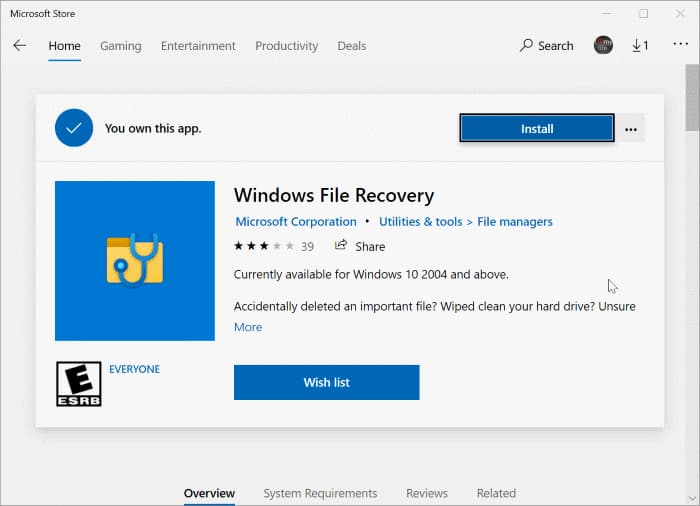


How to Install and Use Windows File Recovery However, Microsoft explicitly states that the recovery of files on cloud storage or network file shares is not supported. Instead, the storage space occupied by them is simply marked as empty and made available for storing new data.Īccording to Microsoft’s support page, Windows File Recovery can be used to recover lost files that have been deleted from a local storage device and can’t be restored from the Recycle Bin, including internal drives, external drives, and USB devices. Well, inside the package there is indeed a folder called “gui” and an executable called “WinFRUI.exe”, doesn’t actually work (yet) though, but there may be something in the plan 🙂 - WalkingCat June 29, 2020īut despite its somewhat primitive appearance, Windows File Recovery works much like more sophisticated third-party data recovery tools, relying on the fact that deleted files are not immediately erased. And unlike the most popular third-party command-line data recovery tool, TestDisk, it doesn’t even have interactive menus and options that users could easily go through using arrow keys on the keyboard (at least for now). That’s right, Windows File Recovery is a command-line tool.

The main point of controversy is the lack of a graphical user interface. Windows File Recovery was quietly published to Microsoft Store a few days ago, and the initial reactions so far have been mixed (it currently has just 2.5 stars out of 5 on Microsoft Store). Windows leaker WalkingCat has recently discovered a data recovery tool created by Microsoft, called Windows File Recovery, available in Microsoft Store, and, as data recovery professionals, we’re excited to see how it compares with our own data recovery solution, Disk Drill. To help its users recover from data loss, Microsoft has been including various backup features in its operating system for years, such as File History in Windows 10, but they all come disabled by default, forcing many users to rely on third-party data recovery tools. Losing important data due to user error, hardware failure, or software bug is a painful experience, one that unfortunately happens to most Windows users sooner or later.


 0 kommentar(er)
0 kommentar(er)
